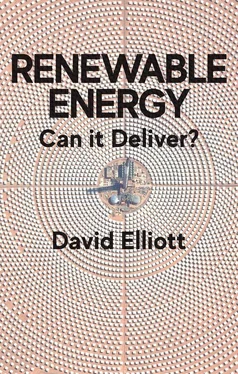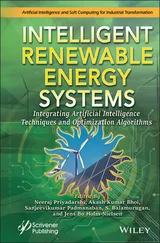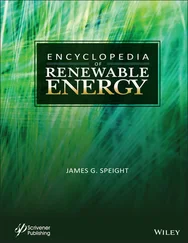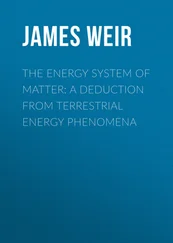This so-called ‘market cannibalization’ effect can be an issue for any successful product, but it may not be a ‘showstopper’ if demand for the product is expanding, as is the case with green energy. However, the competitive ‘race to the bottom’ can still lead to problems with speculative price bids. For example, winning bids for contracts for renewables in competitive capacity auctions may sometimes be set at low power prices that the project cannot in the event deliver, so that it does not go ahead. That happened with some early renewable energy projects under the United Kingdom’s Non-Fossil Fuel Obligation competitive price/capacity auction system in the 1990s, and it may be a risk under the competitive auction systems now being used for renewables around the world (see Box 2.3).
Box 2.3 Market cannibalization and the race to the bottom
There have been some amazingly low-cost solar PV projects winning competitive power purchase contracts in capacity auctions around the world. For example, in 2017, solar auctions in Mexico yielded an unheard-of average price of $20.57/MWh, including a $17.7 bid by Enel, this beating an earlier $17.9/MWh tender for a 300 MW PV plant in Saudi Arabia. The price falls have continued. For example, in 2019, PV projects were given contracts in Portugal at €14.8/MWh ($16.6).
Low prices like these, comparable with, or sometimes even lower than, conventional power prices, may be exceptional and locationally specific. However, there has clearly been a trend to ever-lower bid prices, some of them perhaps being set unrealistically low, in some cases speculating against future possible energy price trends (Davis 2017a; Thurston 2017). Rules about project delivery, with fines for non-compliance, may need to be toughened up to avoid undue speculation and the risk of project failure. So there can be a downside to relentless competition. Interestingly, in this context, Mexico has recently halted its private contract auction process, and is looking instead to more of a role being played by the state power company.
All that said, there is no doubt that technology costs are falling, for PV especially, around the world. Lazard’s 2018 review put the US levelized (lifetime-averaged) cost of energy for utility-scale crystalline PV, without subsidy, at $44/MWh. It noted that subsidies reduced the cost of power supplied to $32/MWh (Lazard 2018b). Even in the United Kingdom, not known for its sunny weather, contracts for large-scale PV (under the CfD system) were offered at £50/MWh ($65/MWh) and there has been talk of unsubsidized projects getting down to £40/MWh by 2030 (Stoker 2018). The trend seems likely to continue. Bloomberg New Energy Finance have suggested that PV costs will fall by 71% by 2050 (BNEF 2018a) and some even look to prices in effect bottoming out so that, at least for domestic supplies, the costs will be negligible (Clark 2018).
That may be very optimistic, but it is possible that, as has happened with some consumer ICT electronics, costs will fall to the point where the market has focused more on charging for the software and content than for the hardware. In the case of PV, that might mean that the emphasis for supply companies shifts to charging local decentral ‘prosumers’ for energy management services, to optimize supply-and-demand grid balancing and to aid peer-to-peer trading of surpluses. In time, a new type of energy service market may thus emerge.
While market-related issues will remain paramount, some of the issues facing renewables are more strategic, concerning uncertainties about the overall direction that should be taken. For example, in terms of scale, some look to large systems, seeking economies of scale, others to smaller projects, more appropriate to local communities. The classic large technology is hydro, the classic small technology is PV solar, although both can also be deployed at other scales, for example with large solar farms and small hydro projects.
As noted earlier, there are environmental issues with large hydro and tidal-barrage projects, but there are also economic issues with some small projects. For example, micro-wind domestic-scale units are very much less cost effective than large turbines, given that the power available is proportional to the square of the turbine radius, and large turbines can be located in wind farms in windier sites, with the power output being proportional to the cube of the wind speed. Solar PV is more scale-flexible, and domestic-scale projects have the advantage of delivering power direct to users without grid-supply losses or costs.
However, there are some economies of financing, deployment and operational scale, including for PV solar. For example, the cost/kW of large PV projects is lower than for small projects, with power utilities able to get access to low-cost investment capital more easily than homeowners. They can also build large numbers of projects, reducing the unit cost. The result is that larger utility-scale solar farm projects are usually much more competitive than domestic-scale projects (Brattle 2015; Lazard 2018b).
The often large economic-viability difference between domestic- and utility-scale projects may reduce somewhat as cheaper mass-produced PV cells and lower-cost storage technology emerge, and certainly, aided initially by feed-in tariffs in Europe and to a lesser extent net metering schemes in the United States, residential PV projects have flourished. Indeed, the power utilities sometimes complain that domestic PV users have enjoyed ‘free rider’ advantages since they do not pay the full grid-system usage and upgrade costs, although some PV advocates counter that the utilities are trying to squeeze domestic PV out of the market, for example by seeking to impose system-use charges. There has been a lively debate on this in the United States, in part focused on the level of payment for surplus PV power exported to the grid by prosumers. The same issue has also emerged recently in the United Kingdom, for example in relation to system charges and export tariffs for surpluses from domestic PV (Elliott 2019b).
While some look to renewables being developed on a smaller-scale local basis, and that is well underway in Germany and elsewhere, there are also wider operational and system-level constraints that may limit how much can be done at that level. Most obviously, not everywhere will have access to sufficient renewable inputs to be locally self-sufficient, so they will have to import some of their power. That may be necessary in any case, in order to balance local variations in demand and supply. Although local storage can help, trading power between different locations may be necessary and may also involve buying in power from some quite large projects, of the sort that can only be developed in specific locations, such as hydro, geothermal, tidal and wave projects. Nevertheless, there will be roles for smaller local projects: a balance will need to be struck (see Box 2.4).
Box 2.4 Scale issues: is small beautiful?
Local small-scale generation can deliver power direct to users, avoiding the need for the long-distance transmission and associated energy losses. It can also, in some situations, allow users to have direct control and ownership of the power system. Certainly, consumer-led PV uptake and self-generation by ‘prosumers’ and local energy co-ops, as has now spread across Germany and in some other countries, represents an archetypical ‘destructive innovation’, challenging and changing market and industrial paradigms. Schleicher-Tappeser, writing in the journal Energy Policy , said that it allows consumers of all sizes to produce power themselves: ‘new actors in the power market can begin operating with a new bottom-up control logic.’ He added that the ‘increasing autonomy and flexibility of consumers challenges the top-down control logic of traditional power supply and pushes for a more decentralised and multi-layered system’ (Schleicher-Tappeser 2012).
Читать дальше












